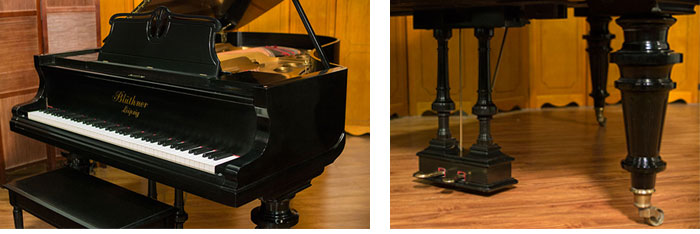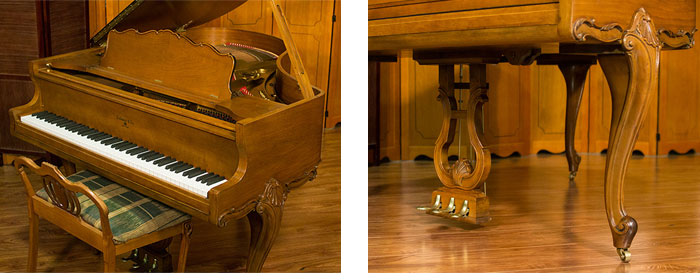You might have heard this term and wondered exactly what it meant. Is an art-case piano something that affects the sound or function of a piano – or is it just a cosmetic difference? Today we will discuss what makes a piano an art-case instrument and how they differ from other pianos.
If you see a piano that has intricate carvings on the case, the music rack, or the legs it would probably classify as an art-case piano. There are many different models and types of art-case pianos but they are all similar in that they have more details in the case including the possibility of intricate woodwork and carvings that differ from traditional design pianos.
Here are a couple different examples of art-case piano designs:
Steinway Louis XV

French Provincial Art-Case Upright Piano

German-made Feurich with Burled Mahogany

Steinway Model A Art-Case from 1893

German-made Blüthner Art-Case

Sohmer American-made Art-Case

As you can see, there are many different types and designs of art-case pianos. So you might be wondering, does any of this effect the piano as an instrument?
Art-Cases are made by many different manufacturers in addition to their regular case designs. They are usually exactly the same pianos internally, but with more intricate elements in the cases. They have the exact same parts as their regular piano models and are not compromised as instruments in any way. So for example, the Steinway model A art-case is the same piano as the traditional spade leg Steinway model A.
So why would you want an art-case piano? It’s all based on your taste in furniture. After all, a piano is one of the most significant pieces of furniture you invest in as well as being a musical instrument. Some people prefer the more intricate woodwork and others would rather have a basic piano design. Art-cases tend to be a bit more expensive, but it’s purely an aesthetic preference.
I hope this is helpful and if you have any questions about this topic or any other, please email me Robert@LivingPianos.com for more information.






